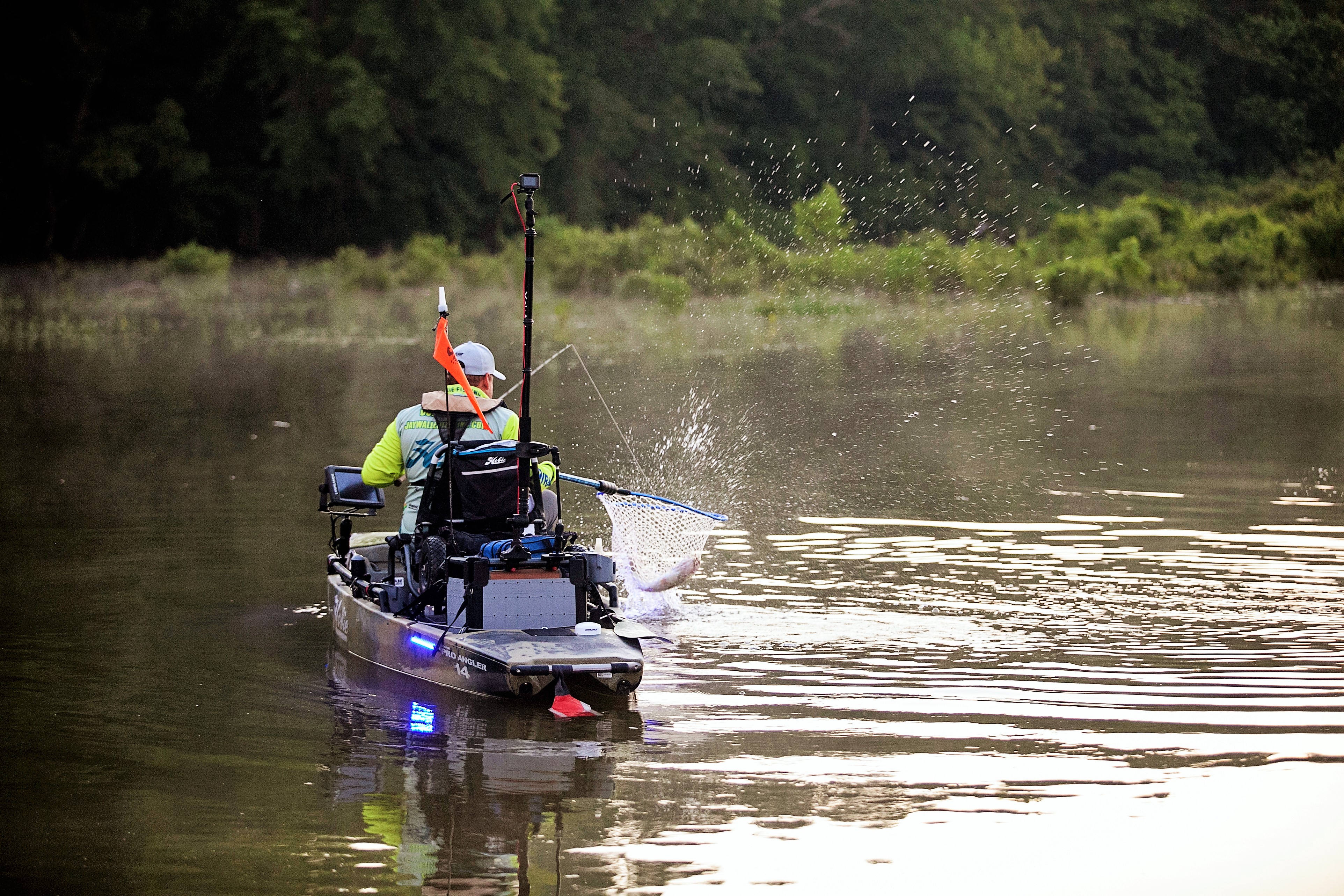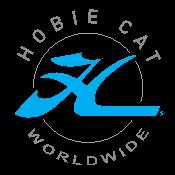Add systematic trolling to your kayak angling skills
By Mike Pehanich
Kayak anglers would do well to adopt one of fishing’s most misunderstood, underrated and underutilized approaches to mapping structure and finding fish. And Torqeedo motors can make the practice many times more effective!
Trolling is an angling art probably as old as the dugout canoe.
Today, however, some anglers view it with a jaundiced eye.

Attitudes toward trolling generally stem from waters fished and species pursued. Tournament bass anglers tend to snub the practice. Fishermen pursuing species like trout, salmon or walleye over the broad expanses of the Great Lakes and other spacious waters regard it as a critical means of finding fish spread across vast watery acreages.
Opinions vary, but kayak anglers in general have been fairly open-minded about trolling. For many, however, it is simply a way to keep a lure working while traveling to the next target location. Relatively few treat it as a technique worthy of practice and refinement.
Too bad! Knowledge, ambition and experience can transform trolling from a passive practice to a fine angling art. What’s more, refined trolling techniques can make anyone a better angler and shorten the learning curve on new waters, large and small.
Why troll?
Authors of the trolling “hate mail” cite reasons that don’t always mesh. They may view trolling as too boring or too easy or second cousin to “snagging.” Some complain that it takes no skill, that it is a game of dumb luck, then later argue that it is unfair or too deadly. Some simply dismiss it on aesthetic or philosophical grounds, scolding the practice for its detachment.

But advanced trolling is a blend of science and art, success hinging on knowledge, strategy and repeated practice and refinement.
Buck Perry, the father of structure fishing, taught anglers how to find fish and map bottom structure with the use of versatile lures, called “spoonplugs,” that excelled as trolling and mapping tools. He developed these baits in 1946 – years before Lowrance put popular sonar units into fishing boats. Designed to run at very specific depth ranges, spoonplugs communicated to Buck and his followers structural contours, drop-offs, points, grasslines, and bottom content. When used in the right way with Perry’s systematic approach, they caught fish – big offshore fish that other anglers missed.

Modern bass boat fishermen have the advantage of electronics and fishing platforms that Buck Perry never dreamed of. For better or worse, few today include in their arsenals the precision trolling approach that was the linchpin to Perry’s success.
But, for all their beauty, convenience and functionality, bass boats are not well suited to the kind of precision trolling Perry did or modern day successors do today. Smaller and more agile craft are far more effective under the guidance of a well-schooled troller.
The kayak advantage
Kayaks, on the other hand, comprise a category of very agile watercraft, and kayak anglers would do well to factor sophisticated trolling practices into their angling strategies whether tournament money, a better day’s fishing, or simply better knowledge of a new lake are at stake. Done with skill and deliberation, trolling can help one learn and map water quickly and find concentrations of fish that might otherwise never see your lure.
Here are a few good reasons to add advanced trolling techniques to your skill set.
- Trolling enables the angler to fish large structural elements, eliminate unproductive water, and locate prime structure in a short period of time.
- Knowledge gained about a body of water from systematic trolling can help anticipate fish movement.
-

Kevin Nakada of Hobie holds a hefty smallmouth caught trolling on an offshore reef on Lake of the Woods. Trolling is useful in finding active suspended fish.
- The trolling tools available today are the best to date, and you can tailor them to specific needs.
- The variety and range of trolling lures available today is extensive, and a number of lure manufacturers and trolling experts now provide guidelines for running specific lures at precise depths.
- With rifle sighting and marker buoys, a skilled troller can overcome the limitations of lower end electronics – or even no electronics at all.
- And, yes, trolling still gives you a shot at catching fish when you are simply dragging the bait behind you on your way to a target location.
Advantage of electric motors
Trolling effectiveness hangs on the tools in play and the angler’s ability to use them.
Well-selected rod, reel and line combinations enable lures to run with desired action at selected depths and even telegraph bottom content.
Craft and propulsion variables matter, too.

Increasingly in play in KBF tournaments, electric motors offer the kayak angler the advantage of highly accurate speed control.
The lithium battery-based motors of Torqeedo, title sponsor of the 2018 KBF National Championship and its landmark $100,000 first place purse, lift control capabilities to a new level.
- Precise speed control– Lure speed is a critical variable — second only to depth control in importance – in triggering strikes. The Torqeedo Ultralight 403 motor, Hobie Evolve and Wilderness Systems Helix kayak motors provide real-time digital speed readout measured to 0.1 mph accuracy.
- Hands-on rod control– With rod in hand, an experienced troller can read bottom content (soft bottom, rock, gravel, shells) and lure action and detect short strikes through lure vibration. Paddle propulsion forces a troller to leave the active rod in a rod holder.
- Speed– Contrary to popular belief, lures do not always have to be trolled slowly to be effective. In fact, trolling at speeds well upward of five mph often trigger strikes in warm water conditions.
- Map App and add-ons – A free Torqeedo app employs a Bluetooth transmitter module (Apple and Android only) for wireless link between onboard computer and smartphone. Phone display includes analogue speedometer, a GPS map screen showing real-time boat location, waypoint and zoom-in capability and other navigational and battery life information. Mapping and waypoint marking capability enable an angler to pinpoint productive areas and return to them easily.
- Light weight–The Torqeedo, Hobie and Wilderness Systems motors and their power sources were designed specifically for kayak propulsion. They add little to the total weight of the craft and do not compromise safety or maneuverability.

Embrace trolling or let it go, but before you dismiss it from your game plan, consider it as an approach to map and learn water quickly, pinpoint fish-holding structure, and add more fish – often big fish – to your catch.
Strategic trolling can catapult your on-the-water education and multiply your fish totals. Embrace the art and science of the practice and see what happens!































